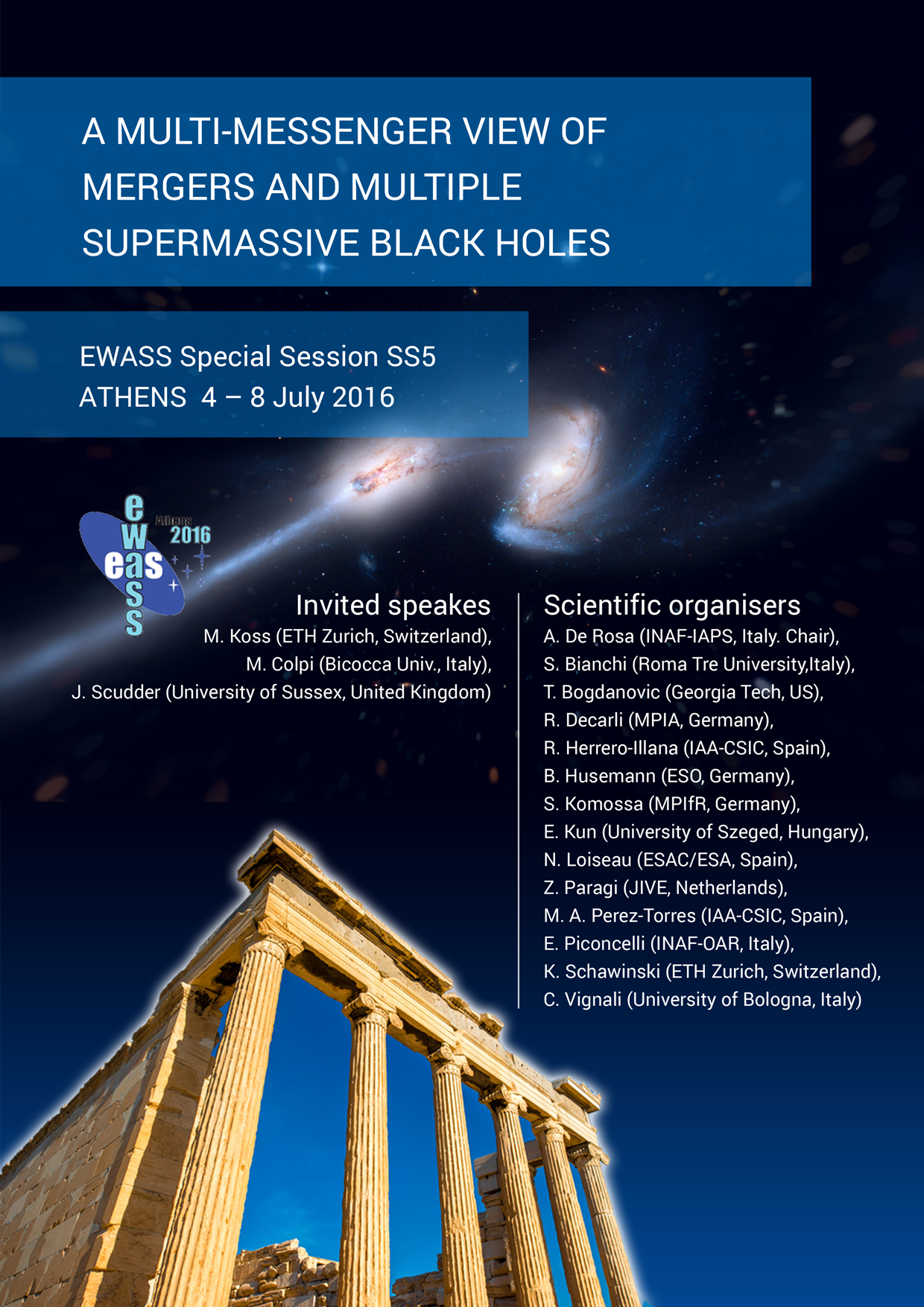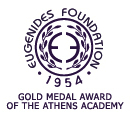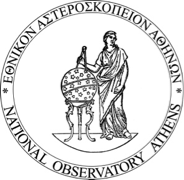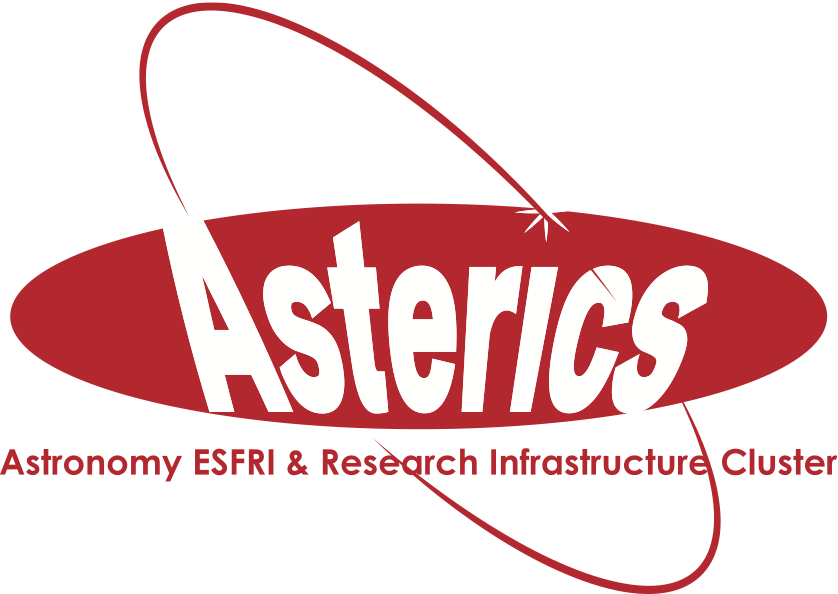Special Session SS5
6 July 2016
A multi-messenger view of mergers and multiple supermassive black holes
Aims and scope
 Hierarchical merger models of galaxy formation predict that binary or multiple Active Galactic Nuclei (AGN) should be common in galaxies. Understanding the types of galaxies and specific merger stages where multiple AGN occur provides fundamental clues about the peak of the supermassive black hole (SMBH) growth during the merging process. Merging AGN systems also form a parent population for the coalescing SMBHs, which are one of the primary sources of gravitational wave (GW). Over the last decade, several multiple AGN have been found serendipitously in local interacting galaxies. Although a significant number of candidates have been selected so far, only a few of them have been confirmed unambiguously, usually through intense multi-wavelength follow-up. While theoretical studies are in general agreement that dynamical friction with gas and stars is a leading mechanism for evolution of AGN pairs at kpc separations, this finding remains to be confirmed by observations.
Hierarchical merger models of galaxy formation predict that binary or multiple Active Galactic Nuclei (AGN) should be common in galaxies. Understanding the types of galaxies and specific merger stages where multiple AGN occur provides fundamental clues about the peak of the supermassive black hole (SMBH) growth during the merging process. Merging AGN systems also form a parent population for the coalescing SMBHs, which are one of the primary sources of gravitational wave (GW). Over the last decade, several multiple AGN have been found serendipitously in local interacting galaxies. Although a significant number of candidates have been selected so far, only a few of them have been confirmed unambiguously, usually through intense multi-wavelength follow-up. While theoretical studies are in general agreement that dynamical friction with gas and stars is a leading mechanism for evolution of AGN pairs at kpc separations, this finding remains to be confirmed by observations.
This special session is dedicated to multi-messenger studies of multiple SMBH systems with an emphasis on the best strategies for detection applicable to the current and upcoming observatories (e.g. double-peaked optical lines, hard X-ray and radio emission). The exciting prospect of direct detection of Gravitational Waves with ground and future space-based experiments, such as the ESA L3-class mission eLISA/NGO, will be also discussed. It will bring together worldwide experts from both observational and theoretical points of view, ensuring lots of room for discussion about theoretical modelling and interpretation.
Programme
- Finding multiple SMBHs with a multi-wavelength approach
- Current theoretical picture of merging and multiple BHs
- High density environment and AGN/host galaxy properties
Invited speakers
- M. Koss (ETH Zurich, Switzerland)
- M. Colpi (Bicocca Univ., Italy)
- J. Scudder (University of Sussex, UK)
Scientific organisers
A. De Rosa (Chair) and the MAGNA Team (www.issibern.ch/teams/agnactivity/Home.html): S. Bianchi, T. Bogdanovic, R. Decarli, R. Herrero-Illana, B. Husemann, S. Komossa, E. Kun, N. Loiseau, Z. Paragi, M.A. Perez-Torres, E. Piconcelli, K. Schawinski, C. Vignali
Contact
alessandra.derosa @ iaps.inaf.it
Updated on Thu Mar 31 14:58:20 CEST 2016
|

 A power cut will shut down all EAS services on Tuesday, 10 January 2017 starting at 7:30 CET.
A power cut will shut down all EAS services on Tuesday, 10 January 2017 starting at 7:30 CET.












